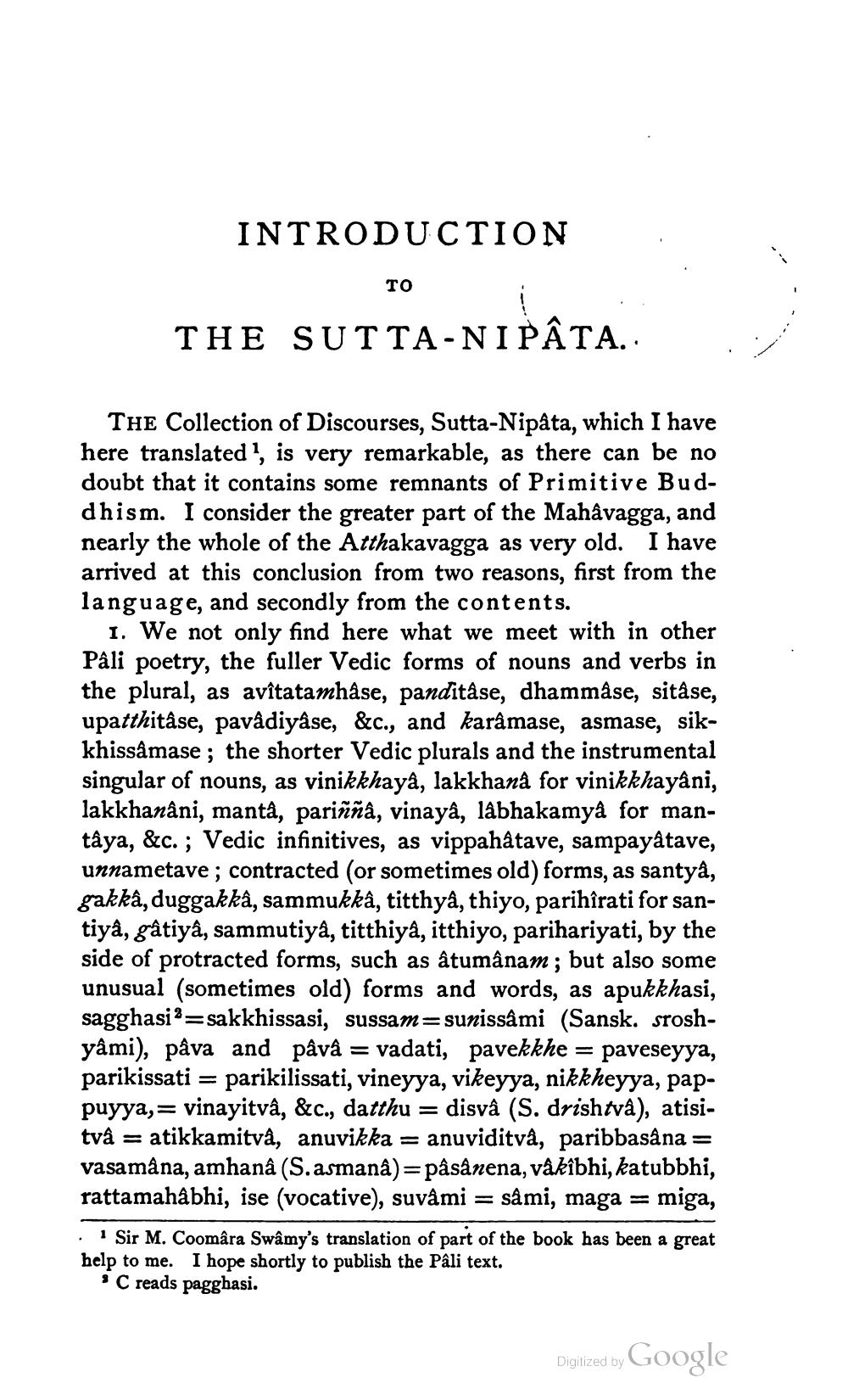________________
INTRODUCTION
TO i THE SUTTA-NIPÂTA.
THE Collection of Discourses, Sutta-Nipata, which I have here translated !, is very remarkable, as there can be no doubt that it contains some remnants of Primitive Buddhism. I consider the greater part of the Mahâvagga, and nearly the whole of the Atthakavagga as very old. I have arrived at this conclusion from two reasons, first from the language, and secondly from the contents.
1. We not only find here what we meet with in other Pâli poetry, the fuller Vedic forms of nouns and verbs in the plural, as avîtatamhâse, panditåse, dhammâse, sitåse, upatthitâse, pavadiyâse, &c., and karâmase, asmase, sikkhissâmase; the shorter Vedic plurals and the instrumental singular of nouns, as vinikkhaya, lakkhana for vinikkhayâni, lakkhanâni, manta, pariñña, vinayâ, lábhakamyà for mantâya, &c.; Vedic infinitives, as vippahâtave, sampayatave, unnametave; contracted (or sometimes old) forms, as santyà, gakkâ, duggakkâ, sammukka, titthyà, thiyo, parihîrati for santiyà, gâtiyâ, sammutiya, titthiya, itthiyo, parihariyati, by the side of protracted forms, such as âtumânam; but also some unusual (sometimes old) forms and words, as apukkhasi, sagghasi'=sakkhissasi, sussam=sunissâmi (Sansk. sroshyâmi), pâva and pâvâ = vadati, pavekkhe = paveseyya, parikissati = parikilissati, vineyya, vikeyya, nikkheyya, pappuyya,= vinayitvâ, &c., datthu = disyâ (S. drishtva), atisitvå = atikkamitva, anuvikka = anuviditva, paribbasâna = vasamâna, amhanâ (S.asmana)= pâsânena, vâkîbhi, katubbhi, rattamahâbhi, ise (vocative), suvâmi = sâmi, maga = miga, · Sir M. Coomâra Swamy's translation of part of the book has been a great help to me. I hope shortly to publish the Pâli text.
° C reads pagghasi.
Digitized by Google




